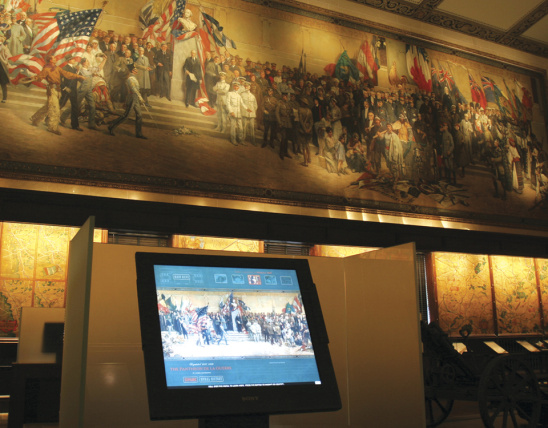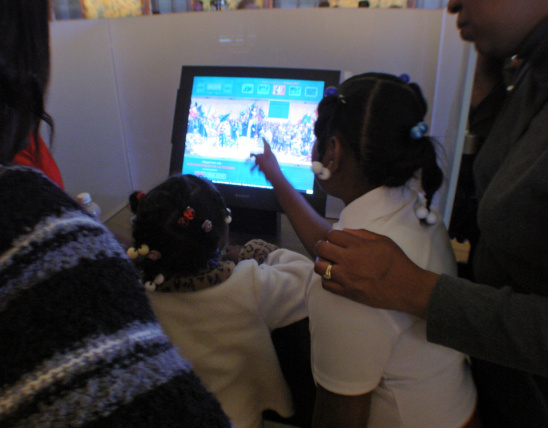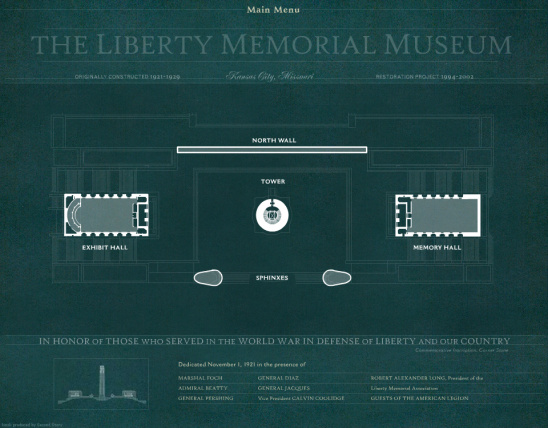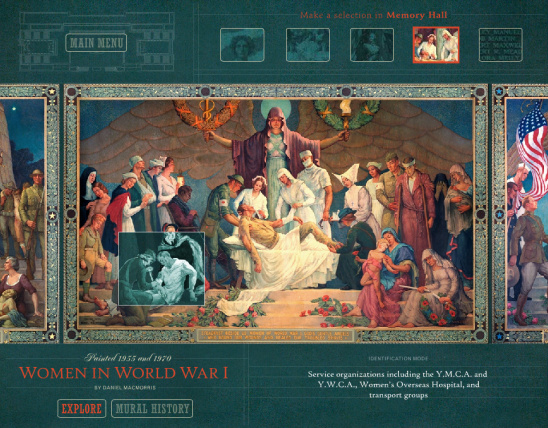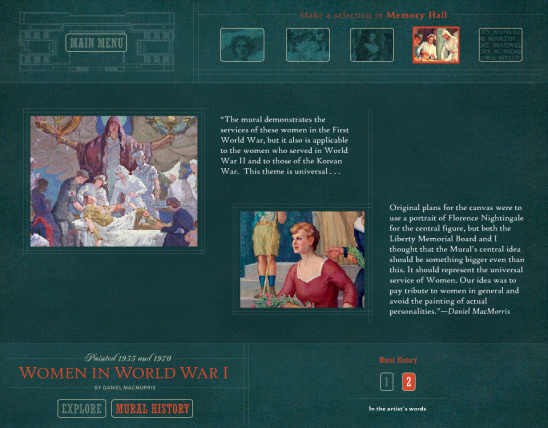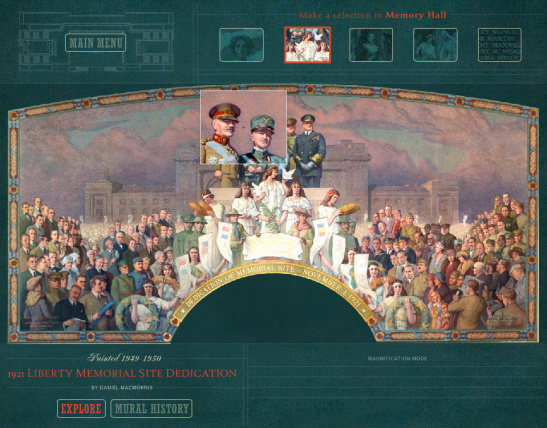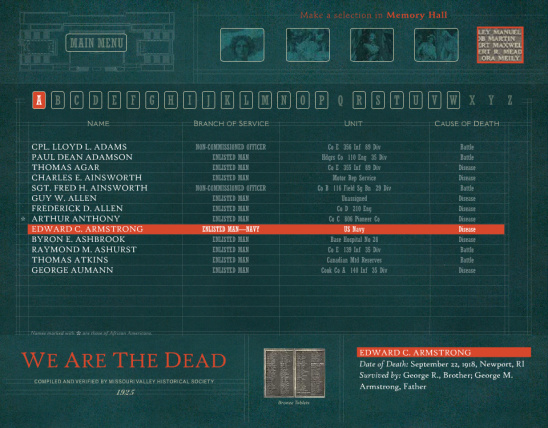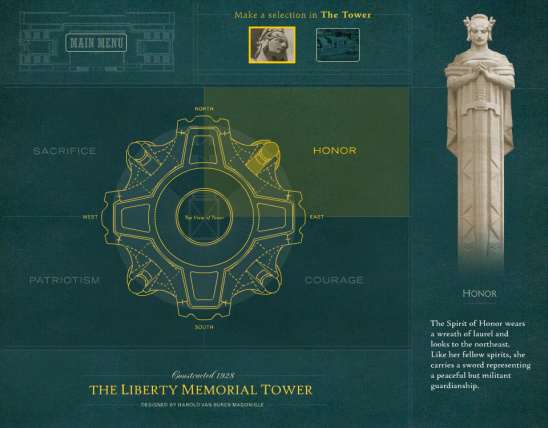Memory Hall
Interactive stations installed in a World War I memorial help audiences understand the symbolism of the art and architecture that surrounds them.
Since its opening in 1926, the Liberty Memorial Museum in Kansas City, Missouri, remains the only monument in North America dedicated exclusively to those who offered and gave their lives in World War I. Filled with historic murals and symbolic architectural elements, the national monument was reopened in May 2002 after seven years of restoration. The four interactive kiosks in Memory Hall explore the symbolism of each of the monument’s features, the history of the artwork in the museum, and identify each of the hundreds of persons represented in the five Daniel MacMorris murals. Through interaction with these interpretive stations, the memorial’s museum has renewed context and meaning for visitors at the monument to the Great War. Set in an interface inspired by early blueprint designs, the kiosk navigation is based on the architectural plan of the physical monument. Visitors can explore the symbolism of the frieze cut into the side of the north wall, the story of the two sphinxes that guard the entrance, and the guardian spirits flanking the tower. Two Web cams atop the tower enable anyone to see the live view from the top. With four of the MacMorris murals overhead in Memory Hall, the four stations are contextually positioned to face opposite sides of the space, enabling users to drag a “filter” over the electronic murals identifying and magnifying each prominent feature and every person depicted. A database of the names on the We Are the Dead bronze tablets helps users get more information about the men and women from Kansas City who died serving in World War I.
